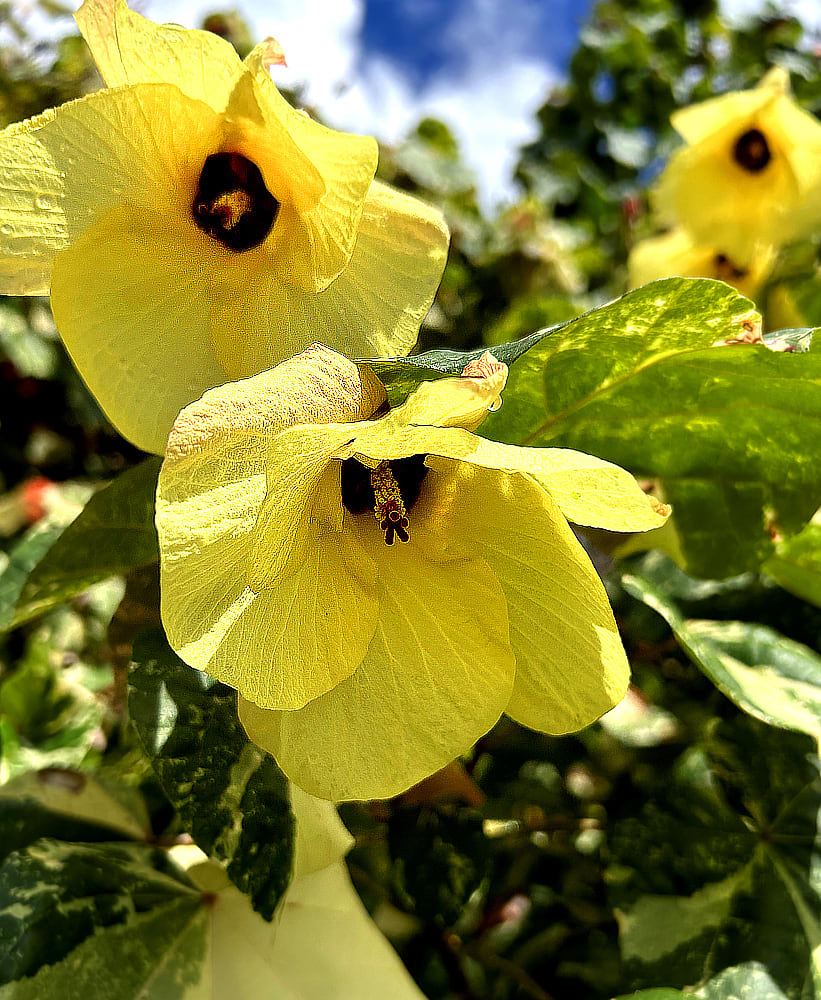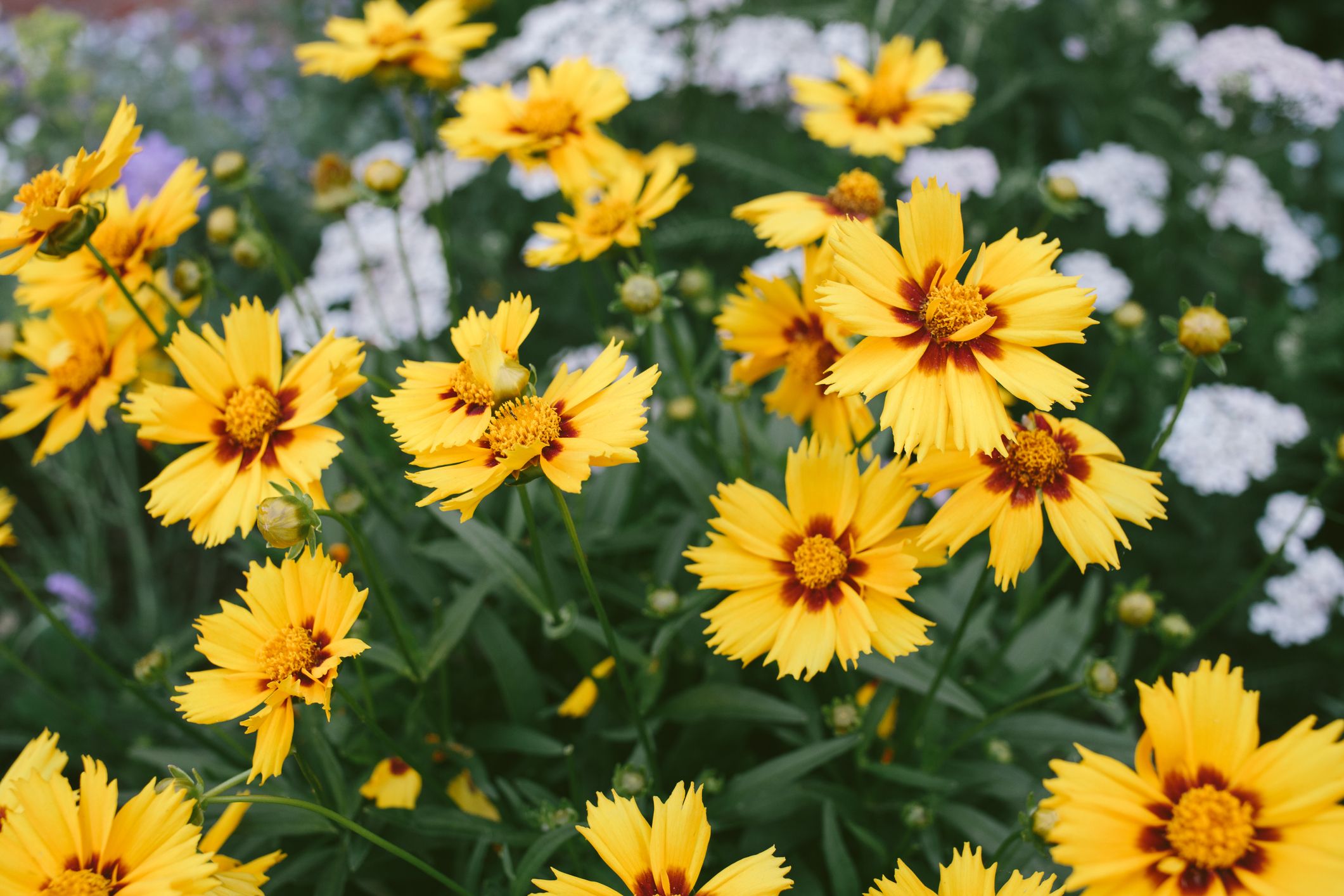“`html
The Radiant Realm of Yellow Flowers
The Radiant Realm of Yellow Flowers: A Comprehensive Exploration
Yellow, the color of sunshine, joy, and warmth, is a dominant hue in the floral world. Yellow flowers, in their myriad forms, have captivated humans for centuries, symbolizing everything from friendship and happiness to jealousy and deceit. This extensive exploration delves into the diverse world of yellow flowering plants, examining their botanical characteristics, cultural significance, ecological roles, and practical applications.
Botanical Diversity: A Spectrum of Yellow
The sheer variety of yellow flowers is astounding, ranging from delicate, pale primroses to bold, sun-drenched sunflowers. This diversity arises from the vast array of plant families that produce yellow blossoms, each with its unique adaptations and evolutionary history.
Asteraceae: The Sunflower Family

The Asteraceae, or Compositae, is one of the largest plant families, renowned for its composite flower heads, which appear as single flowers but are actually clusters of numerous individual florets. This family boasts a plethora of yellow-flowering species, including:
Sunflowers (Helianthus annuus)
Perhaps the most iconic yellow flower, sunflowers are known for their heliotropic behavior, following the sun’s movement across the sky. Their large, vibrant flower heads consist of numerous disc florets in the center and ray florets on the periphery. They are commercially important for their seeds and oil.
Daisies (various genera, including Coreopsis, Rudbeckia)
Yellow daisies, such as Coreopsis and Rudbeckia (including Black-Eyed Susans), are popular in gardens and meadows. They display the characteristic daisy structure with a central disc and radiating petals, providing a cheerful splash of color.
Dandelions (Taraxacum officinale)
Often considered weeds, dandelions possess bright yellow flower heads and are vital food sources for pollinators early in the season. Their seeds are dispersed by wind, contributing to their widespread distribution.
Ranunculaceae: The Buttercup Family

The Ranunculaceae family, known for its buttercups, is another significant contributor to the yellow floral palette. These plants often have glossy petals and are found in diverse habitats.
Buttercups (Ranunculus spp.)
Buttercups are characterized by their shiny, yellow petals and are common in meadows and damp areas. They contain ranunculin, a compound that can be toxic if ingested in large quantities.
Lesser Celandine (Ficaria verna)
This early spring flower has bright yellow, star-shaped petals and is a welcome sight after winter. It spreads readily through bulbils and tubers.
Onagraceae: The Evening Primrose Family
The Onagraceae family features several species with yellow flowers, often opening in the evening or at night.
Evening Primrose (Oenothera spp.)
:max_bytes(150000):strip_icc()/pictures-of-yellow-flowers-4061770-03-f632a3906b6e4f8885c4d3fea461cafd.jpg)
Evening primroses have pale yellow flowers that bloom at night, attracting moths. They are known for their medicinal properties and are used in traditional medicine.
Other Notable Families and Species
Many other plant families contribute to the yellow floral display, including:
Hypericaceae: St. John’s Wort (Hypericum perforatum)
St. John’s Wort has small, bright yellow flowers and is known for its medicinal uses, particularly as a mood enhancer.
Fabaceae: Broom (Cytisus scoparius)
Broom shrubs produce masses of bright yellow, pea-like flowers and are common in heathlands and coastal areas. They are nitrogen-fixing plants.
Poaceae: Yellow Foxtail (Setaria pumila)
Though grasses are not typically known for showy flowers, yellow foxtail has distinctive yellow seed heads that add a subtle touch of color to meadows and fields.
Cultural Significance: Symbolism and Folklore
Yellow flowers have held diverse cultural meanings throughout history, often reflecting the symbolism associated with the color yellow itself.
Positive Symbolism
In many cultures, yellow is associated with:
Friendship and Happiness
Yellow flowers, such as sunflowers and yellow roses, are often given as gifts to express friendship and joy.
Warmth and Optimism
The bright, sunny color of yellow flowers evokes feelings of warmth and optimism, making them popular in celebrations and festive occasions.
New Beginnings and Prosperity
In some cultures, yellow flowers symbolize new beginnings and prosperity, representing the dawn of a new day and the promise of abundance.
Negative Symbolism
However, yellow can also carry negative connotations:
Jealousy and Deceit
In some traditions, yellow flowers, particularly yellow roses, have been associated with jealousy and infidelity.
Caution and Warning
Yellow is often used as a color of caution, and some yellow flowers, such as certain buttercups, contain toxins that can be harmful.
Folklore and Mythology
Numerous myths and legends are associated with yellow flowers. For example, sunflowers are often linked to the Greek myth of Clytie, who turned into a sunflower while gazing at the sun god Helios.
Ecological Roles: Pollination and Habitat
Yellow flowers play crucial roles in ecosystems, primarily as sources of nectar and pollen for pollinators.
Pollinator Attraction
The bright yellow color is highly attractive to various pollinators, including:
Bees
Bees are particularly drawn to yellow flowers, as they can see ultraviolet light, which enhances the visibility of yellow blossoms. Many yellow flowers have patterns that are visible to bees but not to humans, guiding them to nectar and pollen.
Butterflies
Butterflies also visit yellow flowers, seeking nectar. Their long proboscis allows them to access nectar deep within flower tubes.
Flies
Some flies are attracted to yellow flowers, particularly those that mimic the appearance of decaying matter, ensuring pollination for a variety of plant species.
Habitat Provision
Yellow-flowering plants provide habitat and food for various insects and other animals. They contribute to biodiversity and ecosystem stability.
Practical Applications: Horticulture, Medicine, and Industry
Yellow flowers have a wide range of practical applications, from ornamental horticulture to medicinal uses and industrial applications.
Horticulture and Landscaping
Yellow flowers are popular in gardens and landscaping, adding vibrant color and visual interest. They are used in flower beds, borders, and containers, creating cheerful and inviting spaces.
Medicinal Uses
Many yellow-flowering plants have medicinal properties and are used in traditional and modern medicine. Examples include:
St. John’s Wort (Hypericum perforatum)
Used as an antidepressant and for wound healing.
Evening Primrose (Oenothera spp.)
Used for treating skin conditions and hormonal imbalances.
Dandelion (Taraxacum officinale)
Used as a diuretic and for liver health.
Industrial Applications
Some yellow flowers are used in industrial applications, such as:
Sunflowers (Helianthus annuus)
Cultivated for their seeds, which are used to produce sunflower oil, a valuable cooking oil and ingredient in various products.
Dyes
Some yellow flowers, such as dyer’s chamomile (Anthemis tinctoria), have been used to produce natural yellow dyes for textiles and other materials.
Conclusion: The Enduring Appeal of Yellow Flowers
Yellow flowers, with their radiant beauty and diverse symbolism, continue to captivate and inspire. From the towering sunflower to the humble dandelion, these plants play vital roles in ecosystems and human culture. Their ability to evoke feelings of joy, warmth, and optimism ensures their enduring appeal in gardens, landscapes, and beyond. As we continue to appreciate and understand the intricate world of yellow flowers, we gain a deeper connection to the natural world and its boundless beauty.
“`
